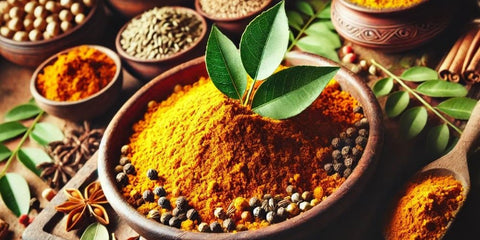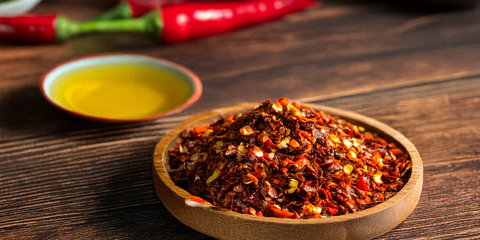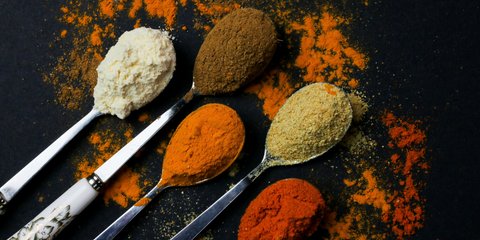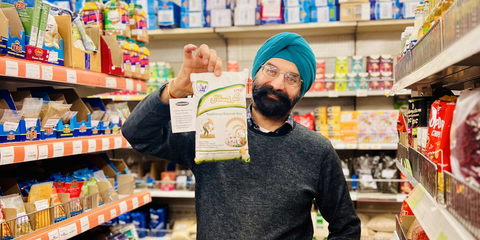Curry, a complex and flavorful dish, has a rich history that spans continents and centuries. Originating from the Indian subcontinent, curry has evolved and adapted to various cuisines around the world, reflecting cultural exchanges, trade routes, and colonial influences.
The concept of curry dates back thousands of years to ancient India, where cooks would use a blend of spices to create dishes with rich, layered flavors. The earliest evidence of curry-like dishes comes from the Indus Valley Civilization around 2500 BCE, where grinding stones with turmeric and ginger residues were found. The word "curry" itself is believed to have derived from the Tamil word "kari," meaning "sauce" or "relish for rice."
Traditional Indian curries often consist of a spice blend called masala, which includes turmeric, coriander, cumin, and other spices depending on regional variations. Curries in India are diverse and vary significantly by region: northern India favors creamy, yogurt-based curries; southern India often features coconut milk; and eastern India uses mustard and fish curries.
During the 15th and 16th centuries, European traders, especially the Portuguese, began to establish trade routes to India, introducing new ingredients like chili peppers, which became a staple in Indian cooking. By the 17th century, British colonizers were also exposed to Indian cuisine, and soon, curry became popular in Britain.
The British influence on curry led to dishes like mulligatawny soup, a British adaptation of a South Indian spiced soup. British demand for curry continued to grow, and by the 18th century, curry powder—a pre-made blend of spices—was created to simplify cooking for British households. In 1810, Britain’s first Indian restaurant, Hindoostane Coffee House, opened in London, cementing the British love affair with curry.
Curry’s spread around the world is largely attributed to migration and trade. Indian laborers and immigrants brought curry recipes to places like the Caribbean, Southeast Asia, Africa, and Japan, where the dish was adapted to local tastes:
Japan: Japanese curry, introduced by British naval officers in the late 19th century, is thicker and sweeter than Indian curry, typically served with rice and pickled vegetables.
Caribbean: Caribbean curry, particularly in Jamaica and Trinidad, incorporates local ingredients like Scotch bonnet peppers and allspice, resulting in a distinctly spicy and aromatic dish.
Thailand: Thai curries, made with a base of curry paste, coconut milk, and unique herbs like lemongrass and kaffir lime leaves, are renowned for their vibrant colors and fragrant flavors.
Curry Isn’t Just Indian: While the term originated in India, many countries have their own unique versions of curry, from Thailand’s green curry to Japan’s mild, roux-thickened version.
World’s Hottest Curry: Known as the “Phaal” curry, this British-Indian dish is reputed to be one of the hottest in the world, with heat levels that often come with warnings in restaurants!
National Dishes: Curry has become a national dish in many places outside India, like Japan’s “kare raisu” (curry rice) and the UK’s famous “chicken tikka masala,” which was voted one of Britain’s favorite dishes.
Health Benefits: Many traditional curry spices, like turmeric and ginger, have anti-inflammatory and antioxidant properties. Turmeric, in particular, has been extensively studied for its potential health benefits.
Curry Houses in the UK: There are over 10,000 curry houses in the UK, a testament to the country's long-standing love for the dish. The popularity of curry even led to the establishment of the annual British Curry Awards.
Curry Leaf vs. Curry Powder: Despite their names, curry leaves and curry powder are unrelated. Curry leaves come from the curry tree and are often used fresh in South Indian cooking, whereas curry powder is a blend of spices created by the British.
Today, curry is celebrated worldwide, with each region putting its own twist on the dish. International curry festivals, fusion dishes, and even experimental recipes have helped curry become a versatile, beloved dish in modern cuisine. Whether enjoyed as a spicy Indian vindaloo, a sweet Japanese curry, or a tangy Thai green curry, curry continues to bring people together over a shared love for flavor and tradition.



